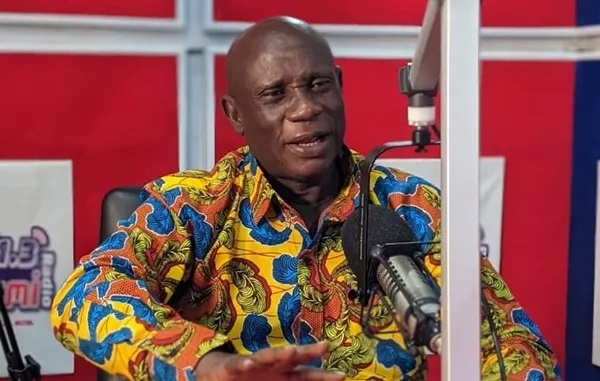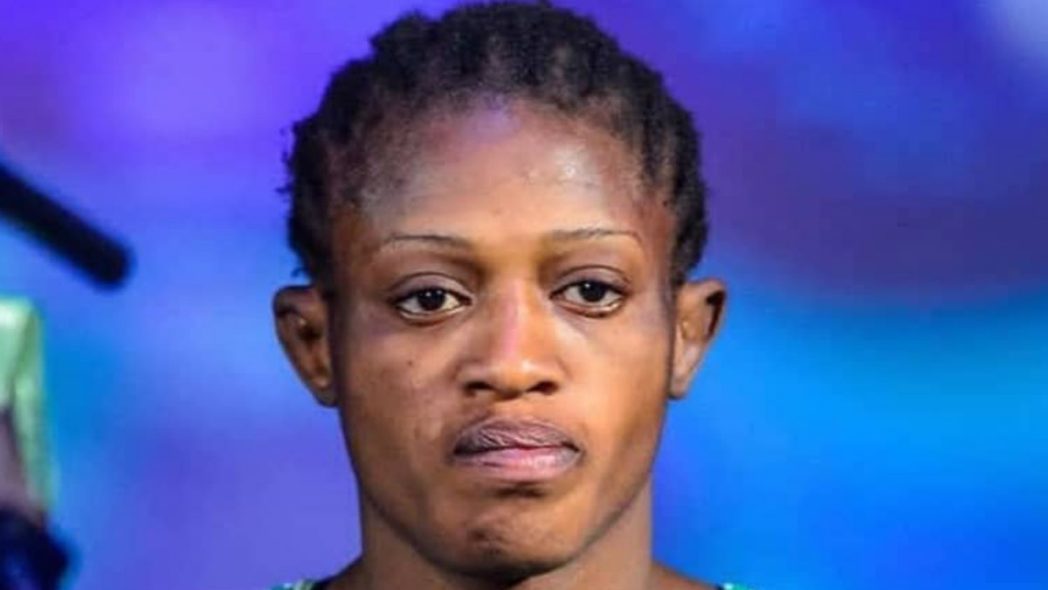From Almost Famous to Pulp Fiction: Costume designer Betsy Heimann on shaping stories through style
You may not know her name, but you’ve almost certainly felt her influence. Whether it’s girls in Afghan coats on Portobello Road or a Vincent Vega costume come Halloween, Betsy Heimann has quietly shaped the way we dress.
The costume designer’s career is nothing short of cinematic itself. From asking for a sewing machine at the age of six to collaborating with film giants like Quentin Tarantino and Cameron Crowe, she’s carved out a lasting legacy - immortalising her work on screen, one iconic look at a time.
You may also like
We speak over Zoom, the creative dialling in from her home in the Hollywood Hills. Trying not to blurt out my admiration for her work too prematurely, we talk about Los Angeles - a sun-kissed (albeit unsettled) image far from the white confines of my office and Betsy’s hometown of Chicago.
“Let me first say thank you for mentioning the costume designer in this case because there have been so many fashion articles about the resurgence of the Penny Lane coat - like it's sprung from the earth, you know?,” the designer says early on in the conversation. “Nobody is that interested in quoting or mentioning us so thank you, thank you for your interest in the costume design from all of us costume designers.”
On the flip side, we have plenty to thank Betsy for. To start with, the crisp, white shirts and beetle suits of Tarantino’s Reservoir Dogs, looks carried over into the director’s magnum opus Pulp Fiction. Penny Lane’s legendary coat in Cameron Crowe’s cult classic Almost Famous. The Sixties-inspired, mustard-checked tailoring in Peter Farrelly Oscar-winning The Green Book. The designer doesn’t stop, having last year wrapped on The Naked Gun starring Liam Neeson and Pamela Anderson which is set to hit our screens this summer.
“We get to read the script to begin with, so we have the whole story in our hands,” she says with a smile, “you as the audience watch it unfold.”
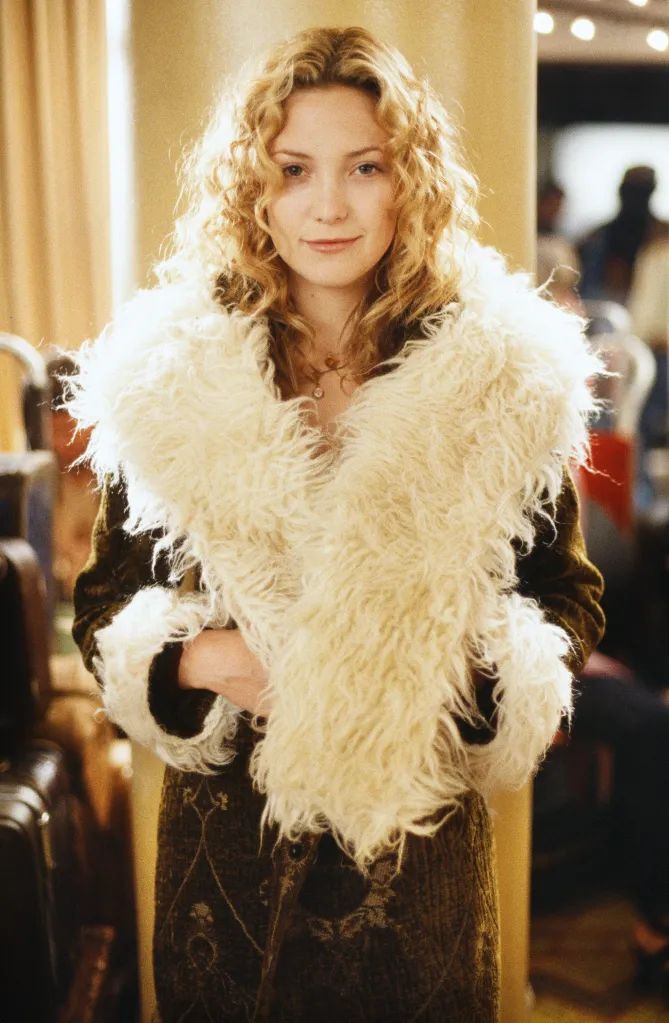 © Almost Famous
© Almost Famous
Rarely are characters synonymous with their costume, but I guess we can call that the ‘Betsy Effect.’ A young Kate Hudson brought Penny Lane to life onscreen, ensheathed in that beautiful avocado green coat, a look so evocative it became a character in its own right.
“The coat was very important to Cameron Crowe, to me and to Kate,” Betsy explains, describing the piece as Penny’s coat of armour. “We started off by using Shirley MacLaine in The Apartment as a muse. There's just something about how she wanted to be more than she was, but she knew that others thought she was something else. We were true to the period, which was late 60s, early 70s, but the Afghan coat was too big and bulky for me.”
She continues: “I thought it would be nice to have fur around the neck because, cinematically as a costume designer, I find that when you put cream colour around the face, it bounces the light off the face. John Toll the cinematographer and I must have gone through ten or fifteen different shades of cream until we found the one that bounced the light off of Kate's face.”
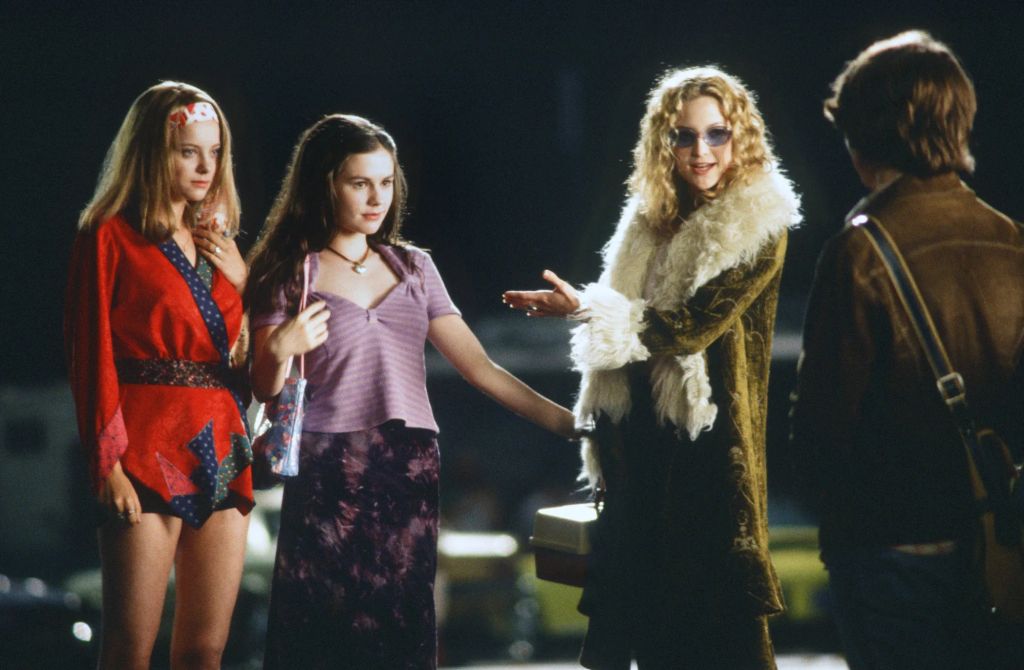 © Almost Famous
© Almost Famous
“I wanted something that wiggled around. I wanted movement as she was walking up the ramp, so it was a confluence of ideas rummaging around in my head and I put them all together.”
Although Betsy created nearly all of the garments for the film, there were a few true vintage pieces thrown into the mix - such as the embroidered Hungarian blouse worn by Penny Lane as she whimsically dances to Cat Steven’s The Wind in an empty arena. “That was vintage. My first film as a costume designer I did in the former Yugoslavia, and these pieces were so easy to come by. I came home with a lot of them, with long sleeves and embroidery. The embroidery was a theme of the period…the loving hands at home.”
Jeans were another garment Betsy sourced herself, heading up to Seattle to sift through rag bins in search of Levi’s coveted 501s. “I designed every T-shirt because the men's T-shirts weren't cut the same way as they are today. They were cut more like women's T-shirts. I made all the Black Sabbath T-shirts and we silk screened the images on them so they would fit the period.”
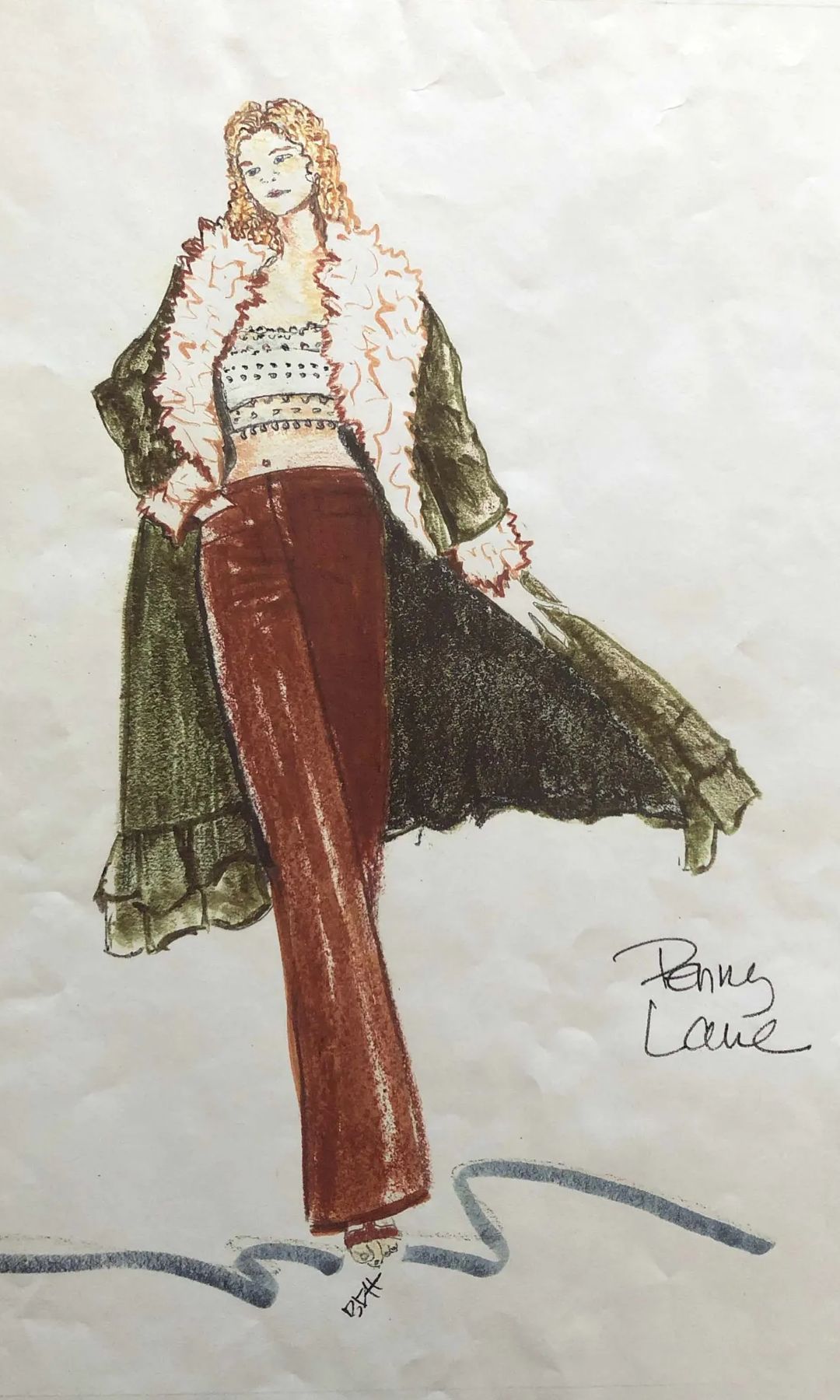 © Courtesy of Betsy Heimann
© Courtesy of Betsy Heimann
 © Courtesy of Betsy Heimann
© Courtesy of Betsy Heimann
Despite a few hiccups on the way (Sarah Polley was initially cast as Penny Lane which evidently didn’t work out), Betsy credits her fellow cast and crew for bringing her sketches to life. “Every actor presented a part of their personality and that would stimulate my imagination. What we didn’t use for the principal parts went to the background actors.”
Today, the coat is as enigmatic as its fictional owner. Only three renditions were made. One is in the possession of Cameron Crowe and the others have been lost. “I try to keep a hold on these things, but it’s not in my power a lot of the time. I believe that the clothes from Pulp Fiction were auctioned off to help pay for editing the film...”
The perfect segue, Betsy met then-emerging director Quentin Tarantino thanks to Lawrence Bender, his producing partner, whom she encountered at a New Year’s Eve party in Los Angeles. The costume designer, who was well on her way by this point, was given the Reservoir Dogs script. Intrigued by the originality of the dialogue, she signed onto the project.
 © Reservoir Dogs
© Reservoir Dogs
The two bonded over a meal at Denny’s, subsequently heading back to the director’s house to watch a stream of new wave and animated films for visual inspiration. Betsy noticed a recurring theme in the visionary's choice of movie.
“I said to him, it occurs to me that there are a lot of men in suits in these references that you're giving me - and you say in the script that these guys are all anonymous. They've all been to prison and none of them have any money. So why not put them all in mismatched black suits, as if they all go to the Goodwill?” Tarantino loved the idea, and the Reservoir Dogs were born.
What was it like working with the directorial giant? “He was so enthusiastic. His enthusiasm was contagious,” Betsy shares candidly. “It was so delightful and he was very interested in my ideas and very trusting in both Reservoir Dogs and Pulp Fiction. It really was a true collaboration and I enjoyed every minute of it.”
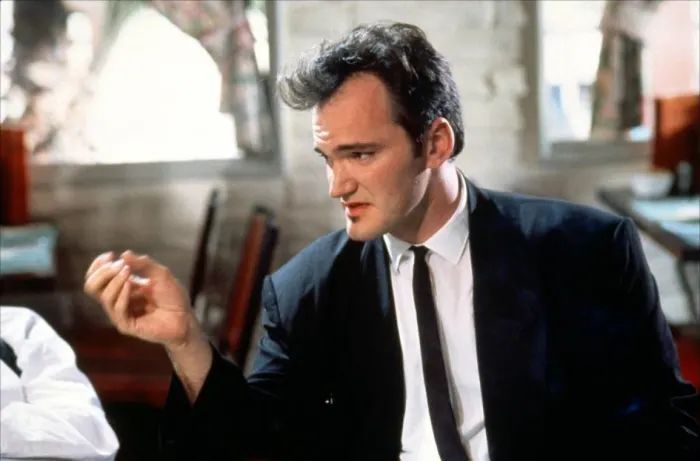 © Reservoir Dogs
© Reservoir Dogs
Betsy carried over the Reservoir Dogs look to Pulp Fiction, telling the director that the film’s protagonists Vincent Vega and Jules Winnfield were Reservoir Dogs in her mind. Even Mia Wallace, played by the incomparable Uma Thurman, was a Reservoir Dog at heart - reflected in her signature stiff white shirt and black trouser combination.
Unlike fashion, which often involves appeasing everyone from marketing teams to end consumers, costume design is rooted in pure construction - building character, mood, and narrative from the inside out.
“I’m used to creating a world,” Betsy says. “The world exists in the purview of my script, the script that somebody has written and somebody is directing, and I'm designing the costumes. I'm dealing with characters. I'm taking them from beginning, middle to end. Where were they the week before this movie started? Where are they going when this movie is over? How do we make that transition? Does the character make a transition, or is he the kind of person who is stuck in a rut and we just say, here he is in this outfit?"
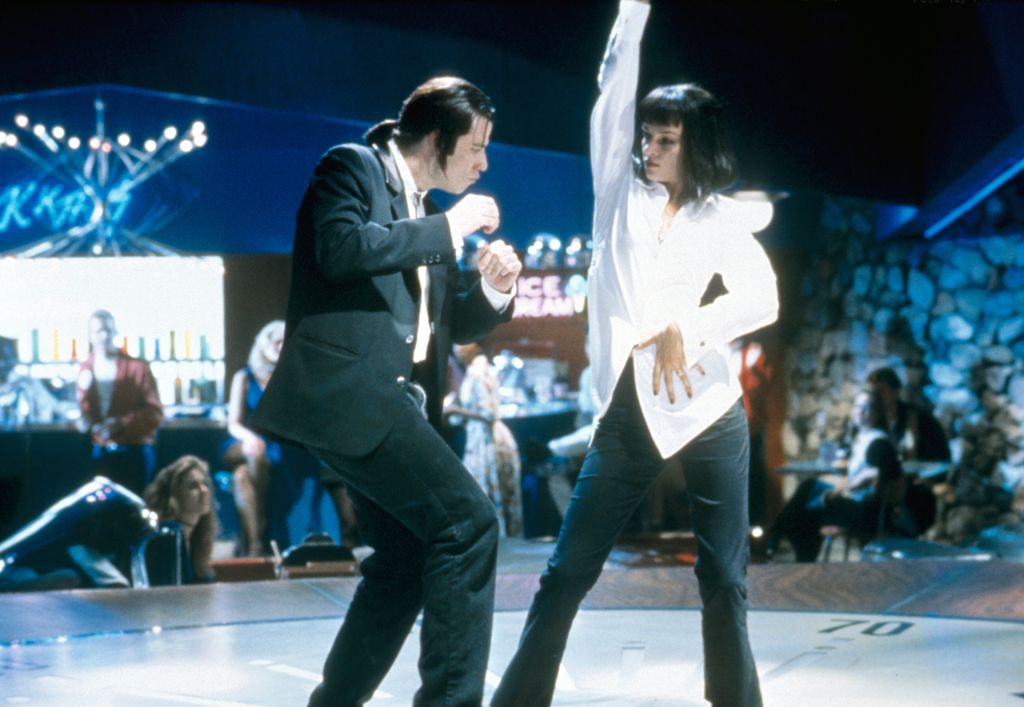 © Miramax/Photofest
© Miramax/Photofest
Sometimes, costume teeters over into the cyclical fashion trends cycle: “Theodora Van Ronkel, one of our greats who is no longer with us, was an unbelievably talented costume designer who did the Bonnie and Clyde movie with Warren Beatty and Faye Dunaway. She changed the fashion look for an entire season, maybe an entire year. I don't know how much credit she gets for that, but sometimes there is a visual that strikes somebody's imagination.”
The relationship between film and fashion continues to strengthen, with blockbusters such as Greta Gerwig’s Barbie and Luca Guadagnino’s Challengers catalysing the ‘core’ phenomenon. Yet, there’s no denying that film remains a turbulent industry in which to work.
You may also like
Betsy imparts some advice to those wanting to crack the creative industry: “You have to keep your eyes open for opportunity. You can't turn your nose up at anything. I made slip covers for the cameras that they used to make Star Trek. That was one of my earliest jobs because I'm a seamstress. Those guys liked me so much they introduced me to Judy Corbett at J&M costumes. Then I was on my way. Keep your eyes open and keep your ear to the ground - or whatever that old expression is.”
It’s clear that Betsy is more than a costume designer - she’s a creator of worlds. With each garment, she builds character, sets tone, and captures a moment in time. Her work, though crafted for the screen, has rippled far beyond it, influencing wardrobes, street style, and runway collections alike. From Penny Lane’s coat to Mia Wallace’s uniform of cool, her designs are etched into film history - forever rewound in the glow of the big screen.
Betsy Heimann's latest film The Naked Gun hits the screens 8 August 2025 in the UK.
